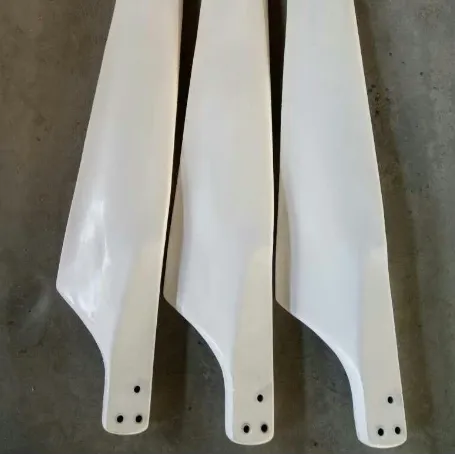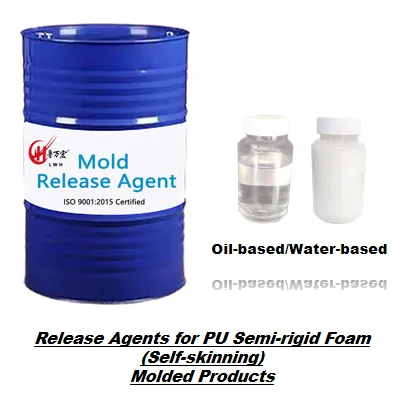Mastering the Application of Release Agents in Polyurethane Foam Production
The successful production of polyurethane flexible foam products heavily depends on the proper application of release agents. These specialized chemicals play a crucial role in ensuring smooth demolding and maintaining product quality. Understanding the correct application techniques of PU flexible foam release agent can significantly impact manufacturing efficiency and end-product quality. This comprehensive guide explores the essential aspects of release agent application, from preparation to troubleshooting.
Understanding PU Flexible Foam Release Agent Properties
Chemical Composition and Functionality
PU flexible foam release agent typically consists of a carefully balanced blend of active ingredients, including silicone-based compounds, organic solvents, and surface-active agents. These components work together to create a microscopic barrier between the mold surface and the expanding foam. The chemical structure ensures optimal release properties while preventing any adverse reactions with the polyurethane chemistry.
The functionality of these release agents extends beyond simple mold release. They contribute to surface finish quality, help prevent foam collapse, and can influence the overall cell structure of the final product. Modern formulations also incorporate features that reduce build-up on mold surfaces, extending the cleaning intervals and improving operational efficiency.
Performance Characteristics
High-quality PU flexible foam release agents exhibit several key performance characteristics. They provide consistent release properties throughout multiple cycles, maintain stability under varying temperature conditions, and offer excellent coverage with minimal application quantities. The best formulations also demonstrate rapid drying times and leave minimal residue on both the mold and the finished product.
Understanding these performance attributes helps operators optimize their application process and achieve better results. The release agent's behavior during application and its interaction with different mold materials directly impacts the success of the foam molding process.
Preparation and Application Techniques
Surface Preparation Requirements
Before applying PU flexible foam release agent, proper mold surface preparation is essential. Start by thoroughly cleaning the mold surface to remove any residual foam, old release agent, or contaminants. Use appropriate cleaning solvents and ensure the surface is completely dry. Surface temperature should be within the recommended range, typically between 20-40°C, for optimal release agent performance.
Regular mold maintenance, including periodic deep cleaning and surface inspection, helps maintain consistent release agent performance. Address any surface imperfections or damage promptly to prevent application issues and ensure uniform coverage.
Application Methods and Tools
Several application methods exist for PU flexible foam release agent, each suited to different production scenarios. Spray application remains the most common, offering excellent coverage and control. Whether using manual spray guns or automated systems, maintaining proper spray patterns and distance is crucial for uniform application.
For complex mold geometries, consider using specialized applicators or multiple spray passes to ensure complete coverage. The choice between conventional air spray, HVLP systems, or electrostatic application depends on factors such as production volume, mold complexity, and environmental considerations.
Optimizing Application Parameters
Coverage and Application Rate
Achieving the right application rate of PU flexible foam release agent is critical for optimal performance. Too little product leads to sticking issues, while excessive application can cause surface defects and waste material. Typical coverage rates range from 15-25 g/m², though specific requirements may vary based on foam formulation and mold characteristics.
Implement a systematic approach to measuring and monitoring application rates. Regular checks using weight measurements or specialized monitoring equipment help maintain consistency across production runs.
Environmental Controls
Environmental factors significantly influence release agent performance. Maintain proper ventilation in the application area to ensure consistent drying conditions. Monitor humidity levels, as excessive moisture can impact release agent effectiveness. Temperature control in the application area helps maintain optimal viscosity and flow characteristics of the release agent.
Consider implementing climate control measures in critical production areas to minimize variations in application conditions. This investment often pays off through improved consistency and reduced quality issues.

Troubleshooting Common Application Issues
Surface Defects and Solutions
Common surface defects related to PU flexible foam release agent application include spotting, streaking, and orange peel effects. These issues often stem from improper application technique or environmental conditions. Address spotting by ensuring uniform coverage and proper atomization. Eliminate streaking by maintaining consistent application speed and overlap patterns.
Regular quality checks and documentation of surface defects help identify patterns and root causes. Develop standardized response procedures for common issues to minimize production disruptions.
Performance Optimization Tips
To optimize the performance of PU flexible foam release agent, focus on maintaining consistent application parameters. Regular operator training ensures proper technique and understanding of critical factors. Implement a preventive maintenance schedule for application equipment to maintain optimal performance.
Consider using automated application systems for high-volume production to improve consistency. Regular review and adjustment of application parameters help adapt to changing conditions and maintain quality standards.
Frequently Asked Questions
What causes PU flexible foam release agent failure?
Release agent failure typically results from incorrect application thickness, contaminated mold surfaces, or improper environmental conditions. Regular maintenance, proper cleaning procedures, and consistent application techniques help prevent most failures.
How often should release agent be applied?
Application frequency depends on various factors including production volume, mold complexity, and release agent formulation. Generally, reapply when release effectiveness diminishes or according to established production schedules, typically every 3-5 cycles for most applications.
Can release agents affect foam properties?
Yes, PU flexible foam release agents can impact surface finish, cell structure, and overall foam properties. Using the correct type and amount of release agent, along with proper application techniques, helps minimize any negative effects while maintaining optimal release performance.

